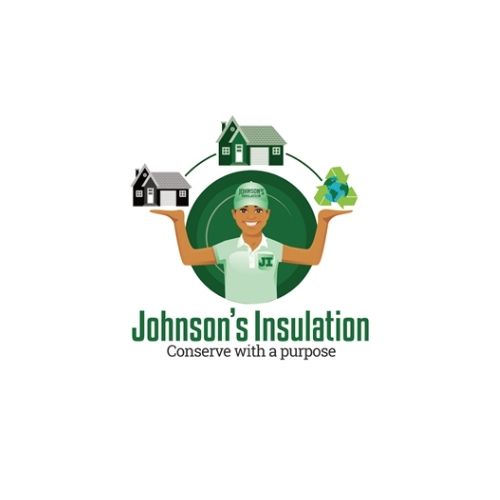
Johnsonsinsulation
Uploaded on Jun 19, 2025
Category
Business
This presentation offers a clear overview of attic insulation, covering its importance, types, installation process, and maintenance tips. It’s designed to help homeowners make informed decisions about improving energy efficiency. For expert guidance and hassle-free service, consider consulting a trusted insulation professional to ensure lasting comfort and performance. For more information, contact us at (510) 660-0455 or visit https://johnsonsinsulation.green/attic-insulation/
Category
Business
Home Attic Insulation The Complete Guide
Home
Attic
Insulation
BENEFITS OF PROPER
• Proper attic insulation for homIeN canS lowUer hLeatiAng aTnd IcoOolingN costs by reducing air leaks.
• Regulates temperature in the home, preventing hot or cold spots.
• Acts as a barrier to outside noises, creating a quieter home environment.
• By reducing strain on the system, it can prolong the life of your heating and cooling units.
• Decreases energy usage, lowering your carbon footprint.
TYPES OF INSULATION
• Fiberglass Insulation: Made from fine glass fibers, it’s non-combustible, affordable, and effective at preventing heat
transfer.
• Spray Foam Insulation: Expands on application, creating an air-tight seal. Great for hard-to-reach areas but more
expensive.
• Blown-in Insulation: Made of fiberglass or cellulose, it’s perfect for attics with irregular spaces.
• Batt Insulation: Pre-cut panels of fiberglass or rock wool, easy to install, best for standard spaces.
• Reflective or Radiant Barrier Insulation: Typically used in warmer climates, reflects heat away. Radiant barriers are
highly reflective materials that re-emit radiant heat rather than absorbing it, reducing cooling loads. As such, a radiant
barrier has no inherent R-value.
HOW INSULATION
WORKS
• Insulation reduces heat transfer between your attic and the living
areas below.
• In winter, it prevents heat from escaping the home, keeping it warmer
inside.
• In summer, it stops outside heat from penetrating, helping maintain
cooler indoor temperatures.
• The material’s effectiveness is measured by R-value, indicating how
well it resists heat flow; higher R-value equals better insulation.
• Insulation also helps prevent moisture buildup, which can cause mold
and rot.
ATTIC INSULATION
INSTALLATION
PROCESS
• First, inspect the current insulation condition and the attic’s
overall structure.
• Clear the attic space to allow easy installation access.
• Choose insulation type based on the climate, budget, and attic
layout.
• Lay batt or roll insulation between joists, or use spray foam/blown-in insulation
for coverage in hard-to-reach spaces.
• Ensure any air leaks around vents, ducts, or wiring are sealed to maximize
efficiency.
• After installation, check for coverage and proper ventilation to avoid moisture
problems.
COMMON
MISTAKES
• Not covering the entire attic space can result in energy
inefficiency.
• Excess insulation in some areas may cause moisture
retention or mold growth.
• Failing to seal gaps around pipes, wiring, or vents leads
to air leaks and energy loss.
• Choosing the wrong insulation type for climate or attic
space can reduce effectiveness.
• Insufficient attic ventilation can lead to trapped moisture,
promoting mold and reducing insulation effectiveness.
MAINTAINING YOUR
ATTIC INSULATION
• Check insulation for settling, gaps, or moisture damage every few years.
• Maintain attic airflow to prevent moisture buildup and extend insulation life.
• If you notice insulation has shifted, repair or replace it to maintain R-value.
• Periodically inspect for any signs of mold or pest infestation that could damage
the insulation.
• If the insulation has degraded or if energy bills increase, consider adding or
upgrading the material.
SIGNS YOUR
ATTIC NEEDS
• If your heIatNing oSr coPolingE cosCts aTre rIisiOng N
unexpectedly, your insulation might be lacking.
• Noticeable temperature fluctuations in certain areas
indicate insufficient insulation.
• If icicles form on the roof, it’s a sign of poor attic insulation
causing uneven heat distribution.
• Gaps, cracks, or settled insulation indicate the need for
replacement or upgrade.
CONCLUSION
It is an effective way to improve home comfort, lower energy bills, and
increase property value while supporting environmental sustainability. If
you're uncertain about the best insulation materials or installation methods,
seeking professional help is a smart choice. A certified
insulation contractor can provide expert advice, ensure accurate
installation, and recommend the right solutions tailored to your attic’s needs,
helping you achieve optimal energy efficiency and long-term results.
CONTACT US FOR
EXPERT
SOLUTIONS
ADDRESS PHONE
1721 Broadway, Ste. 201 (510) 660-0455
Oakland, CA 94612
EMAIL WEBSITE
[email protected] www.johnsonsinsulation.gree
n

Comments